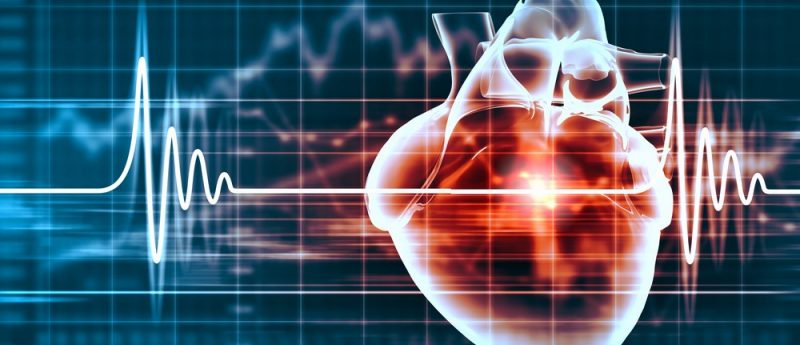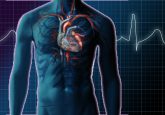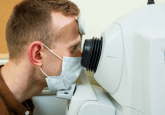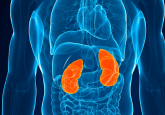Latest developments in cardiac research

Sensor developed to monitor pulsing cardiomyocytes
Lucy Cliff (Future Science Group)
Engineers in collaboration with the University of Tokyo, Tokyo Women’s Medical University and RIKEN (Tokyo, Japan) have developed an ultrasoft electronic sensor to closely monitor pulsing cardiomyocytes without disrupting their behavior. This is a huge advancement in cardiovascular research as it provides more accurate information about beating heart cells than was previously possible.
“When researchers study cardiomyocytes in action they culture them on hard petri dishes and attach rigid sensor probes. These impede the cells’ natural tendency to move as the sample beats, so observations do not reflect reality well,” explained Sunghoon Lee, University of Tokyo. “Our nanomesh sensor frees researchers to study cardiomyocytes and other cell cultures in a way more faithful to how they are in nature. The key is to use the sensor in conjunction with a flexible substrate, or base, for the cells to grow on.”
To conduct the research, a healthy culture of cardiomyocytes derived from human stem cells was grown on a soft fibrin gel base and the nanomesh sensor was placed on top of the cell culture. Placement of the nanomesh sensor on the culture in the correct orientation was achieved through a complex process of addition and removal of a liquid medium at specific time frames.
“The fine mesh sensor is difficult to place perfectly. This reflects the delicate touch necessary to fabricate it in the first place,” commented Lee. “The polyurethane strands which underlie the entire mesh sensor are 10 times thinner than a human hair. It took a lot of practice and pushed my patience to its limit but eventually I made some working prototypes.”
The sensor is produced by first electro-spinning to extrude ultrafine polyurethane strands into a flat sheet that then coating in parylene plastic to strengthen it. Dry etching with a stencil then removes the parylene from sections of the mesh to which gold is applied to make the sensor probes and communication wires. These are finally isolated to prevent interference using additional parylene.
There probes allow the sensor to read the voltage at three locations on the cardiomyocyte culture. This allows researchers to see propagation of signals known as an action potential that causes the cells to beat and can be used to monitor the effect of drugs on the heart.
“Drug samples need to get to the cell sample and a solid sensor would either poorly distribute the drug or prevent it reaching the sample altogether. So, the porous nature of the nanomesh sensor was intentional and a driving force behind the whole idea.” Lee concluded: “Whether it’s for drug research, heart monitors or to reduce animal testing, I can’t wait to see this device produced and used in the field. I still get a powerful feeling when I see the close-up images of those golden threads.”
Sources: Lee S, Sasaki D, Kim D et al. Ultrasoft electronics to monitor dynamically pulsing cardiomyocytes. Nat. Nanotechnol. (2018); www.eurekalert.org/pub_releases/2018-12/uot-dgb122518.php
♦
Novel biomarkers discovered for atherosclerotic cardiovascular diseases
Lucy Cliff (Future Science Group)
Researchers from McMaster University (Ontario, Canada) have discovered novel biomarkers and therapeutic targets for atherosclerotic cardiovascular diseases (CVDs). This discovery has the potential to assist early diagnosis of CVDs, which are currently the leading cause of mortality and morbidity worldwide, with four out of five deaths occurring as a result of myocardial infarction or stroke.
Despite numerous medical advances in CVD prevention, further research is necessary to identify novel therapeutic targets and strategies that may lead to early diagnosis of CVD allowing timely intervention and preventing serious consequences or death. The field of metabolomics offers a novel solution for CVDs as metabolomics-based biomarkers not only indicate the presence of a disease but can also help clinicians detect CVDs prior to the appearance of overt clinical symptoms.
The study, published in Cardiovascular and Hematological Disorders-Drug Targets, discusses the analytical techniques and workflows used in untargeted metabolomics. Several case studies highlighting the use of untargeted metabolomics in cardiovascular research are as identified. Five of the case studies show approaches to identify biomarkers for CVD risk, myocardial ischemia, transient ischemic attack, incident coronary heart disease, and myocardial infarction risk prediction are described.
Untargeted metabolomics has only recently been utilized in cardiovascular research and there remains a need for future advancements in the technologies used in this approach. However, this study demonstrates that metabolomics can be successfully utilized to discover novel biomarkers and therapeutic targets for CVDs and may potentially reduce mortality rates in the future.
Sources: Dang VT, Huang A & Werstuck GH. Untargeted metabolomics in the discovery of novel biomarkers and therapeutic targets for atherosclerotic cardiovascular diseases. Cardiovasc. Hematol. Disord. Drug Targets, 18(3), 166–175 (2018); www.eurekalert.org/pub_releases/2018-12/bsp-nb122518.php






